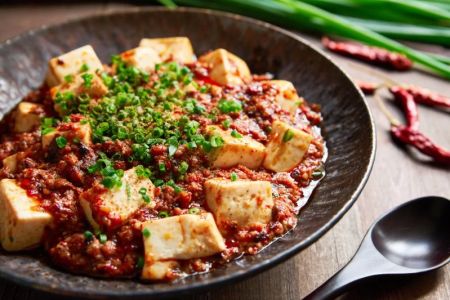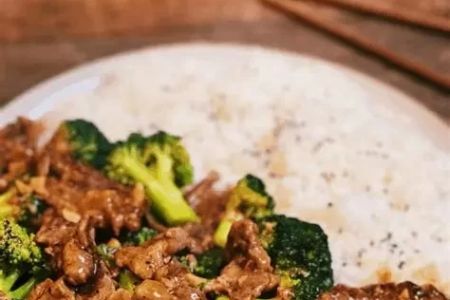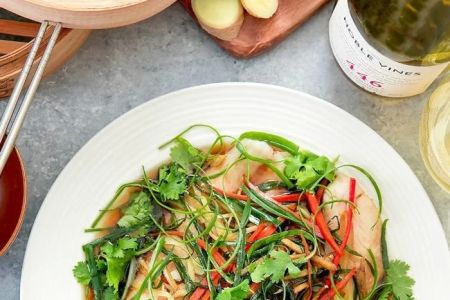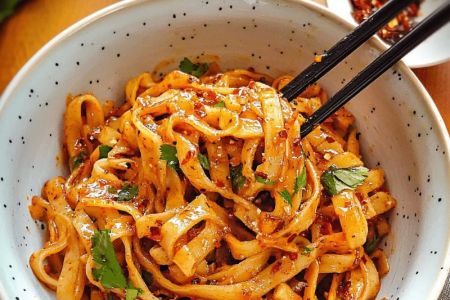- 1. What Is Hunan Cuisine?
- 2. Key Flavors in Hunan Cuisine
- 3. Famous Spicy and Sour Dishes from Hunan
- 4. The History and Evolution of Hunan Cuisine
- 5. How to Cook Hunan Dishes at Home
- 6. Chinese Food Recommendations
1. What Is Hunan Cuisine?
Hunan cuisine, also known as Xiang cuisine, hails from the Hunan province in Southern China. It is celebrated for its bold, spicy flavors, combining a unique balance of heat and sourness. Unlike other Chinese cuisines that focus on subtle and delicate tastes, Hunan dishes pack a punch with their liberal use of chili peppers, garlic, and vinegar, making it one of the spiciest culinary traditions in China.
The dishes from Hunan are known for their freshness and the ability to transform simple ingredients into aromatic, flavorful meals. This cuisine incorporates a wide variety of cooking methods, including stir-frying, steaming, braising, and smoking. The signature feature of Hunan food is its dynamic flavor profile—intensely spicy and often accompanied by a distinct tangy sourness from ingredients like vinegar and pickled vegetables.
2. Key Flavors in Hunan Cuisine
Hunan cuisine stands out for its bold, distinctive flavors. Here are the primary elements that make this cuisine so unique:
1. Spiciness
Spiciness is at the heart of Hunan cuisine. The region is known for its heavy use of fresh chili peppers, making its dishes some of the spiciest in China. Red and green chilies are often used in both raw and cooked forms, bringing an intense, mouth-tingling heat that defines many Hunan dishes. The famous "mala" flavor, a combination of spiciness (la) and numbing (ma) from Sichuan peppercorns, also appears in Hunan cuisine, though it is less prevalent than in its neighbor's dishes.
2. Sourness
The sourness in Hunan cuisine is just as vital as the heat. Vinegar and pickled ingredients, such as mustard greens or radishes, add a tangy depth of flavor that balances the spiciness. The sourness enhances the complexity of dishes, providing a refreshing contrast to the bold, spicy components.
3. Garlic and Aromatics
Garlic is another key ingredient in Hunan cuisine, used abundantly to create deep, savory flavors. Aromatic herbs and spices like ginger, scallions, and shallots are also commonly found in Hunan dishes, adding layers of complexity and fragrance.
4. Smoked and Fermented Ingredients
Hunan cuisine also features an interesting use of smoked and fermented ingredients. Smoked meats, particularly pork, add a rich and robust flavor to many dishes, while fermented vegetables contribute an umami element that rounds out the flavors of the food.
3. Famous Spicy and Sour Dishes from Hunan
Hunan cuisine is home to several famous dishes that showcase its signature spicy and sour flavors. Here are some of the most popular dishes you should try:
1. Chairman Mao's Red-Braised Pork (Mao Shi Hong Shao Rou)
This dish is one of the most iconic in Hunan cuisine. Named after Chairman Mao, who was born in Hunan, it features braised pork belly cooked with soy sauce, sugar, and a generous amount of chili peppers. The result is a sweet, savory, and spicy dish with rich flavors. It’s often served with steamed rice and is beloved by locals and visitors alike.
2. Spicy Fish Head with Tofu (Duo Jiao Yu Tou)
This dish is a local favorite, combining fish head, tofu, and a fiery chili sauce. The fish head is known for its tender meat, and when combined with the spicy, savory sauce and soft tofu, it creates an irresistible dish that embodies the spicy and sour essence of Hunan cuisine. It’s a must-try for any food lover visiting the region.
3. Hunan-style Steamed Fish (Xiang Zhuo Yu)
This dish features whole fish steamed with chili peppers, garlic, and a variety of seasonings. The fish absorbs the rich flavors of the sauce, resulting in a dish that is both spicy and aromatic. The use of fresh ingredients and bold flavors makes this dish a standout in Hunan’s culinary repertoire.
4. Hot and Sour Vermicelli (Suan La Fen)
A popular street food in Hunan, hot and sour vermicelli is made with rice noodles, chili, vinegar, and a variety of toppings, including peanuts and vegetables. This dish provides a perfect balance of heat and tang, making it a satisfying and flavorful meal that locals enjoy at any time of the day.
4. The History and Evolution of Hunan Cuisine
Hunan cuisine has a rich history that dates back centuries, shaped by the local geography, culture, and the people’s love for bold flavors. The region’s climate, which is both hot and humid, has influenced the use of spicy ingredients to preserve food and ward off diseases. Additionally, the Hunan people have developed a deep appreciation for fresh, seasonal ingredients, which are reflected in the cuisine's emphasis on vibrant, aromatic dishes.
Over the years, Hunan cuisine has evolved, incorporating influences from neighboring regions while maintaining its distinct identity. The use of chili peppers, pickled vegetables, and aromatic herbs remains central to the cuisine. Today, Hunan cuisine is enjoyed not only in China but also around the world, with many restaurants offering Hunan-inspired dishes that continue to attract food lovers.
5. How to Cook Hunan Dishes at Home
If you’re inspired to try Hunan cuisine at home, here are some tips for cooking these delicious dishes:
1. Stock up on Essential Ingredients
To cook authentic Hunan dishes, you’ll need ingredients like dried and fresh chili peppers, rice vinegar, fermented bean paste, garlic, ginger, and Sichuan peppercorns. These items are readily available at Asian grocery stores and online markets. It’s also important to have a good supply of fresh vegetables and proteins, as Hunan cuisine relies heavily on fresh ingredients.
2. Master Stir-Frying and Braising Techniques
Hunan dishes often use stir-frying and braising as cooking techniques. Stir-frying is ideal for creating quick, flavorful meals, while braising allows ingredients to soak up the spicy, tangy sauces. Both methods are simple but essential for bringing out the rich, bold flavors that define this cuisine.
6. Chinese Food Recommendations
If you’re looking to explore more of the bold and delicious flavors of Hunan cuisine, check out our recommendations at Chinese Food for the best ingredients and cooking tools to get started. Whether you’re a seasoned chef or a beginner in the kitchen, we offer everything you need to bring the flavors of Southern China into your home.
For those looking to experience Hunan cuisine beyond the kitchen, consider visiting local Chinese restaurants specializing in regional Chinese dishes. Many of these establishments offer authentic Hunan meals, providing a great way to taste the best of what this vibrant cuisine has to offer.







